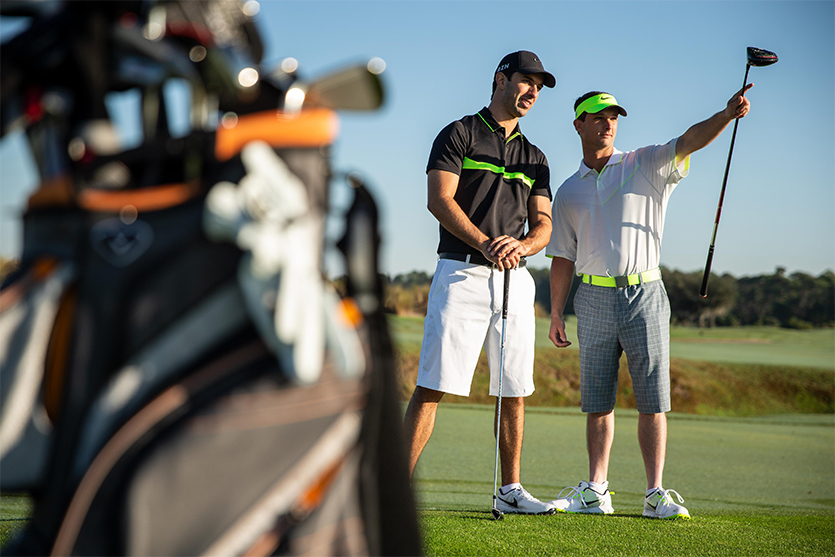When to Use What Golf Clubs

As a golfer, one of the key aspects of mastering the game is understanding when to use the right golf club for each shot. Whether you’re a beginner or a seasoned player, having a clear understanding of club selection can greatly impact your performance on the course. The ability to choose the appropriate golf club based on factors such as distance, shot trajectory, and course conditions is essential for achieving accurate and consistent results.
In this article, we will delve into the art and science of club selection and explore the factors that influence when to use what golf clubs. From understanding the different types of golf clubs and their specific attributes to considering shot scenarios and player preferences, we will provide you with practical insights and guidance to help you make informed decisions on the course.
By the end of this article, you will have a comprehensive understanding of when to use woods, irons, wedges, and putters, and how to match them to specific shot situations. We will also discuss factors such as distance, wind conditions, course layout, and player skill level that play a crucial role in club selection.
Whether you’re faced with a tee shot, an approach shot, a short game situation, or a putt, knowing when to use what golf clubs will empower you to make confident and strategic choices. So, let’s dive in and explore the world of golf club selection, uncovering the secrets to improving your game and maximizing your potential on the course.

Understanding Golf Club Types and Distances
Golf clubs can be categorized into four main types: woods, irons, wedges, and putters. Each club type has its own attributes and is designed for specific purposes. Let’s delve into the characteristics of each club type and their respective distances:
Woods
Woods are typically used for long-distance shots, particularly off the tee. They are known for their larger clubheads and the ability to generate considerable distance. Woods are commonly numbered as 1-wood (driver), 3-wood, 5-wood, etc., with the lower number representing a lower loft and potential for more distance.
Irons
Irons are versatile clubs used for a variety of shots on the course. They come in numbered sets (3-iron, 4-iron, 5-iron, etc.), with the lower numbers having less loft and greater distance potential. Higher-numbered irons offer more loft and control, making them suitable for approach shots and shots requiring accuracy.
Wedges
Wedges are specialized clubs designed for specific shot scenarios around the green. They provide high loft and shorter distances compared to woods and irons. Common types of wedges include pitching wedges, gap wedges, sand wedges, and lob wedges. Each wedge has a unique loft angle and bounce, allowing for different shot options.
Putters
Putters are used on the green for precise control and accuracy when putting the ball into the hole. They have a flat clubhead and are primarily designed to roll the ball smoothly on the green’s surface.
Now that we have a basic understanding of the different club types, let’s explore when to use each of them in specific shot scenarios.
Selecting the Appropriate Club for Each Shot Scenario
Choosing the right golf club for a particular shot depends on various factors, including the distance to the target, wind and weather conditions, course layout, player skill level, and shot trajectory requirements. Let’s examine the club selection considerations for different shot scenarios:
Tee Shots
Tee shots are typically taken on par 3, par 4, and par 5 holes. The club selection for tee shots depends on the distance to the target and the desired landing area. Here are some guidelines for selecting the appropriate club:
- Par 3 Holes: On shorter par 3 holes, a mid to short iron may be suitable for accurate shots. On longer par 3s, a longer iron or hybrid club might be necessary to achieve the desired distance.
- Par 4 and Par 5 Holes: For longer par 4 and par 5 holes, a driver or fairway wood is often used to maximize distance off the tee. However, if accuracy is a priority, a hybrid or long iron may be preferred.
Approach Shots
Approach shots refer to shots played from the fairway or rough with the intention of reaching the green. The club selection for approach shots depends on the distance remaining to the green and the desired shot trajectory. Here are some considerations:
- Long Approach Shots: When facing long approach shots, fairway woods or long irons can provide the necessary distance. Consider the wind direction and adjust club selection accordingly.
- Mid-Range Approach Shots: Mid-irons, such as 6-iron or 7-iron, are often used for mid-range approach shots. These clubs offer a balance of distance and control, allowing for accurate shots.
- Short Approach Shots: As you get closer to the green, shorter irons, such as pitching wedges or gap wedges, are preferred for better control and accuracy.
Short Game Shots
The short game encompasses shots played near or around the green. It includes pitching, chipping, bunker shots, flop shots, and lob shots. Here’s a breakdown of club selection for various short game scenarios:
- Pitching and Chipping: For pitching and chipping around the green, wedges with higher loft, such as sand wedges or lob wedges, are commonly used. These clubs allow for precise control and can help elevate the ball quickly over obstacles.
- Bunker Shots: When faced with bunker shots, a sand wedge is typically the club of choice. Its lofted face helps the ball escape from the sand and land softly on the green.
- Flop Shots and Lob Shots: Flop shots and lob shots require finesse and a high trajectory. A lob wedge, with its steep loft angle, is ideal for these delicate shots that require the ball to stop quickly on the green.
Putting
Putting is the final phase of each hole, and using the right putter is crucial for accuracy and control. The selection of a putter depends on factors such as distance control, green conditions, and personal preference. Putters come in various styles, including blade putters, mallet putters, and counterbalanced putters. Experimenting with different putters can help you find the one that suits your stroke and provides the best feel on the greens.
Remember that club selection is a combination of art and science. While the guidelines provided can be helpful, it’s essential to consider your own skill level, swing consistency, and playing style when making club choices on the course.
Conclusion
Knowing when to use the right golf club for each shot is a skill that can significantly impact your golf game. By understanding the characteristics of different club types, considering the shot scenario, and taking into account various factors such as distance, conditions, and player preferences, you can make informed club selections that optimize your performance on the course. Remember to practice and experiment with different clubs to develop familiarity and confidence in your club selection skills. With time and experience, you’ll become more adept at choosing the perfect golf club for each shot, improving your overall game and enjoyment of the sport.





